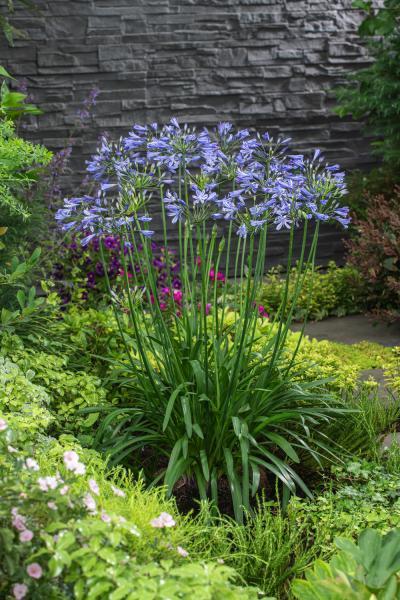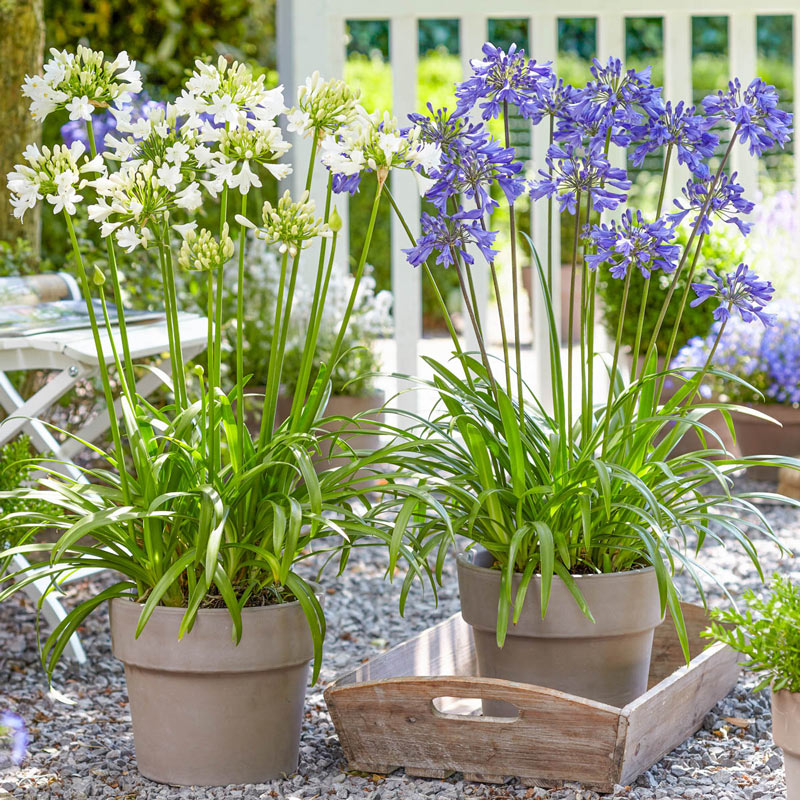Letting Loose the Secret to Effective Agapanthus Cultivation: Idea for a Flourishing Garden
In the realm of horticulture, growing agapanthus successfully needs a tactical strategy that includes numerous facets of plant treatment. With mindful interest to information, one can unlock the keys to nurturing these magnificent flowers, bring about a garden that flourishes with appeal and vibrancy. By understanding the nuances of agapanthus farming, one can produce an atmosphere where these plants thrive and grow generously. In the adhering to discussion, we will certainly discover vital pointers and methods that will direct you in the direction of a flourishing agapanthus yard, supplying insights right into best techniques, soil problems, sprinkling techniques, and a lot more.
Planting Agapanthus: Ideal Practices
When planting Agapanthus, appropriate dirt prep work is vital for making certain successful development and growth of these beautiful flowers. Agapanthus, frequently called Lily of the Nile or African lily, grows in well-draining soil with a somewhat acidic to neutral pH level - Agapanthus. Prior to growing, it is essential to change hefty clay dirts with natural matter such as garden compost or peat moss to improve drainage and provide important nutrients for the plants
To plant Agapanthus, select an area that receives complete sunshine to partial shade, as this will certainly promote healthy development and abundant blooming. Dig an opening two times the diameter of the plant's root sphere and put the Agapanthus at the very same deepness it was formerly growing. Gently backfill the hole with dirt, pushing down securely to get rid of any type of air pockets around the roots.
Water the newly planted Agapanthus thoroughly and proceed to maintain the soil evenly damp, particularly during the plant's active expanding period. Agapanthus. Using a balanced plant food once a month can additionally sustain the plant's development and blooming. By following these ideal techniques for planting Agapanthus, you can produce a sensational screen of these captivating flowers in your yard
Suitable Soil Issues for Agapanthus
For ideal growth and growing success of Agapanthus plants, making certain the soil conditions are optimal is essential. Agapanthus thrives in well-draining soil with a somewhat acidic to neutral pH degree ranging from 6.0 to 7.0. This kind of dirt permits appropriate water drainage, avoiding waterlogging which can lead to root rot. To boost dirt drainage, take into consideration adding raw material such as garden compost or peat moss when preparing the growing site. Moreover, Agapanthus favors soil that is abundant in nutrients, so incorporating a balanced plant food during the expanding season can advertise healthy development and vibrant flowers.

Watering and Feeding Tips
To ensure healthy growth and dynamic flowers, correct watering and fertilizing techniques are vital for effective Agapanthus farming. Agapanthus plants profit from normal watering, especially throughout the growing season. It is recommended to water deeply when a week, making sure the soil is moist yet not waterlogged. During warm climate or in pots, more frequent watering may be required to protect against the dirt from drying out totally.
When it comes to fertilizing Agapanthus, a well balanced plant food with equivalent parts nitrogen, phosphorus, and potassium can be applied in the spring to promote healthy growth and flowering. Slow-release fertilizers are ideal for providing nutrients progressively over a prolonged period. Avoid over-fertilizing, as this can bring about extreme foliage see this page growth at the expense of blossoms.
Furthermore, integrating natural matter like garden compost into the soil can boost nutrient levels and improve dirt structure, assisting in the general health of the Agapanthus plants. By following these watering and feeding pointers, garden enthusiasts can ensure their Agapanthus plants grow and create stunning display screens of flowers.
Pruning and Deadheading Techniques
Correct trimming and deadheading techniques play a crucial duty in preserving the health and wellness and aesthetic appeals of Agapanthus plants, complementing the crucial methods of watering and feeding for successful farming. Pruning moved here Agapanthus entails removing invested flower heads, dead or yellowing leaves, and general shaping of the plant to advertise better development. Deadheading, the process of eliminating discolored blossoms, not just enhances the plant's appearance but likewise motivates more flowering.
When deadheading Agapanthus, it is suggested to snip off the blossom stem at the base making use of sharp, clean shears. This procedure reroutes the plant's energy from seed manufacturing back right into root and vegetation growth, advertising a much healthier and much more durable plant. Normal deadheading can extend the flowering duration of Agapanthus and prevent self-seeding, which can cause overcrowding.
In terms of trimming, Agapanthus usually take advantage of a light trim after blooming to clean up the plant and encourage fresh development. Reducing back the spent blossom stems and eliminating any kind of damaged or dead foliage aids preserve the plant's vigor and total look. Nevertheless, it is vital to avoid reducing into the crown of the plant, as this can deteriorate its health and wellness.

Protecting Agapanthus From Pests and Diseases
Carrying out efficient bug and condition monitoring strategies is crucial to protecting the wellness and vitality of Agapanthus plants in cultivation. Agapanthus are generally hardy plants, but they can still come down with numerous parasites and conditions otherwise correctly cared for. One typical bug that impacts Agapanthus is find here the Agapanthus borer, a caterpillar that tunnels into the plant, triggering damage to the leaves and flowers. To stop invasions, routine inspection of the plants is necessary. If borers are identified, they can be by hand removed, or insecticidal soap can be utilized as a control step.
In enhancement to bugs, Agapanthus are susceptible to illness such as origin rot and fungal leaf areas. By remaining vigilant and dealing with bug and condition problems quickly, gardeners can aid their Agapanthus thrive and prosper.

Verdict
Finally, successful cultivation of agapanthus requires appropriate planting methods, suitable dirt problems, appropriate watering and feeding, normal trimming and deadheading, and protection from conditions and bugs. By complying with these ideas and methods, gardeners can make sure a growing garden loaded with gorgeous agapanthus blooms. Agapanthus. Remember to maintain regular treatment and focus to detail to promote the health and longevity of these magnificent plants
When growing Agapanthus, appropriate soil preparation is essential for ensuring effective development and development of these lovely blossoms.Water the freshly planted Agapanthus thoroughly and proceed to maintain the soil evenly wet, particularly during the plant's energetic expanding season.For optimum development and flowering success of Agapanthus plants, ensuring the dirt conditions are perfect is crucial. When planting or hair transplanting Agapanthus, make sure the soil is well-prepared to give the essential foundation for the plants to develop themselves effectively. One common parasite that affects Agapanthus is the Agapanthus borer, a caterpillar that tunnels right into the plant, causing damages to the leaves and blossoms.